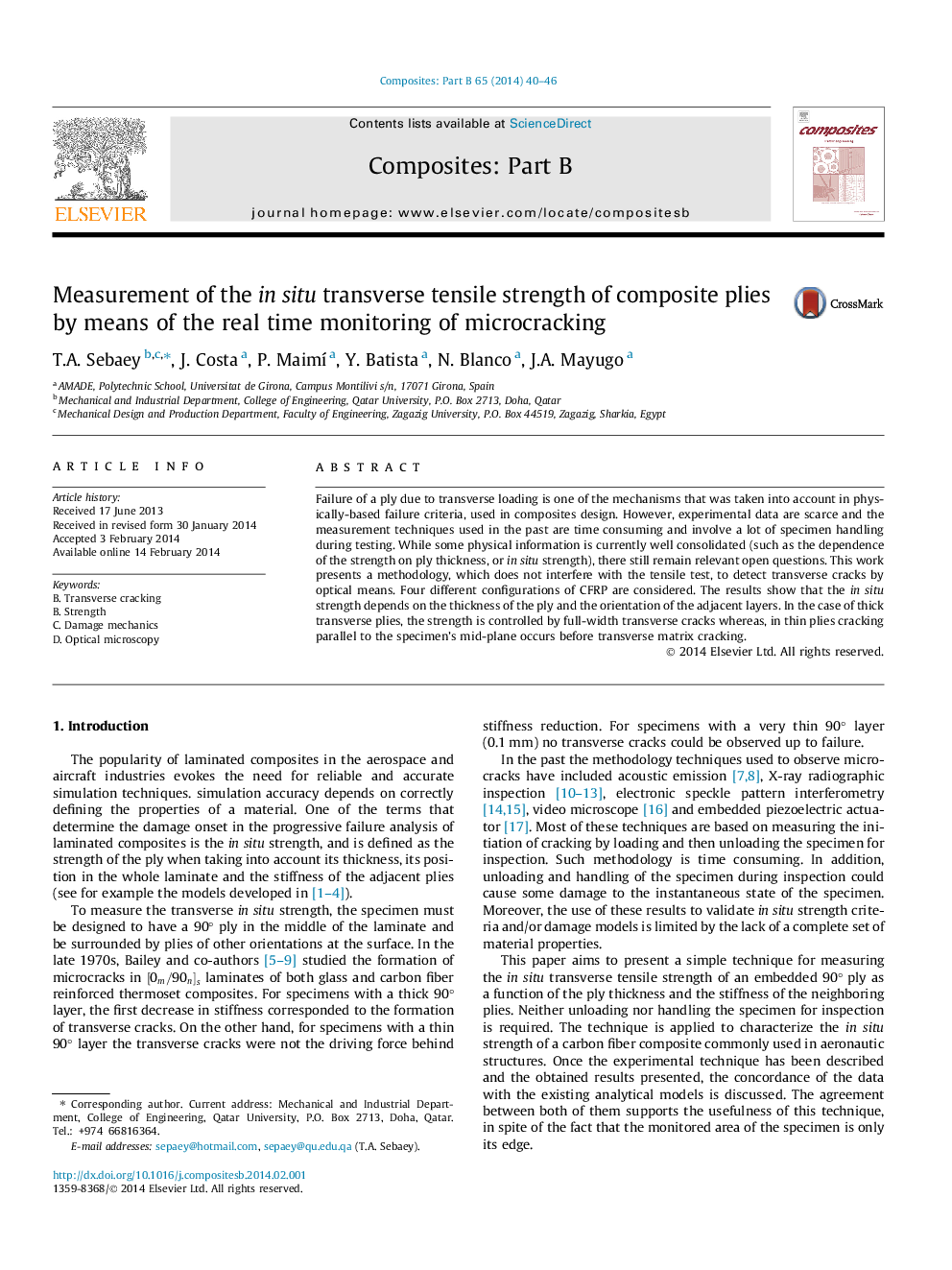| Article ID | Journal | Published Year | Pages | File Type |
|---|---|---|---|---|
| 817625 | Composites Part B: Engineering | 2014 | 7 Pages |
Abstract
Failure of a ply due to transverse loading is one of the mechanisms that was taken into account in physically-based failure criteria, used in composites design. However, experimental data are scarce and the measurement techniques used in the past are time consuming and involve a lot of specimen handling during testing. While some physical information is currently well consolidated (such as the dependence of the strength on ply thickness, or in situ strength), there still remain relevant open questions. This work presents a methodology, which does not interfere with the tensile test, to detect transverse cracks by optical means. Four different configurations of CFRP are considered. The results show that the in situ strength depends on the thickness of the ply and the orientation of the adjacent layers. In the case of thick transverse plies, the strength is controlled by full-width transverse cracks whereas, in thin plies cracking parallel to the specimen's mid-plane occurs before transverse matrix cracking.
Related Topics
Physical Sciences and Engineering
Engineering
Engineering (General)
Authors
T.A. Sebaey, J. Costa, P. MaimÃ, Y. Batista, N. Blanco, J.A. Mayugo,
